
Teaching your kids to read can be SCARY. Really scary!
Reading is the foundational skill that will influence your child’s success in virtually every area, which is intimidating enough – but then when you begin looking at how to teach your kids to read you run into a whole new language of phonemic awareness, digraphs, and the whole word vs phonics debate….eek!
Luckily, it’s not as complicated as it seems.
We initially took a casual approach to learning to read, and it worked well with four of our children. They were able to become fluent readers after a handful of lessons using basic resources. I detailed how they learned to read here. Many children will learn to read as easily as this.
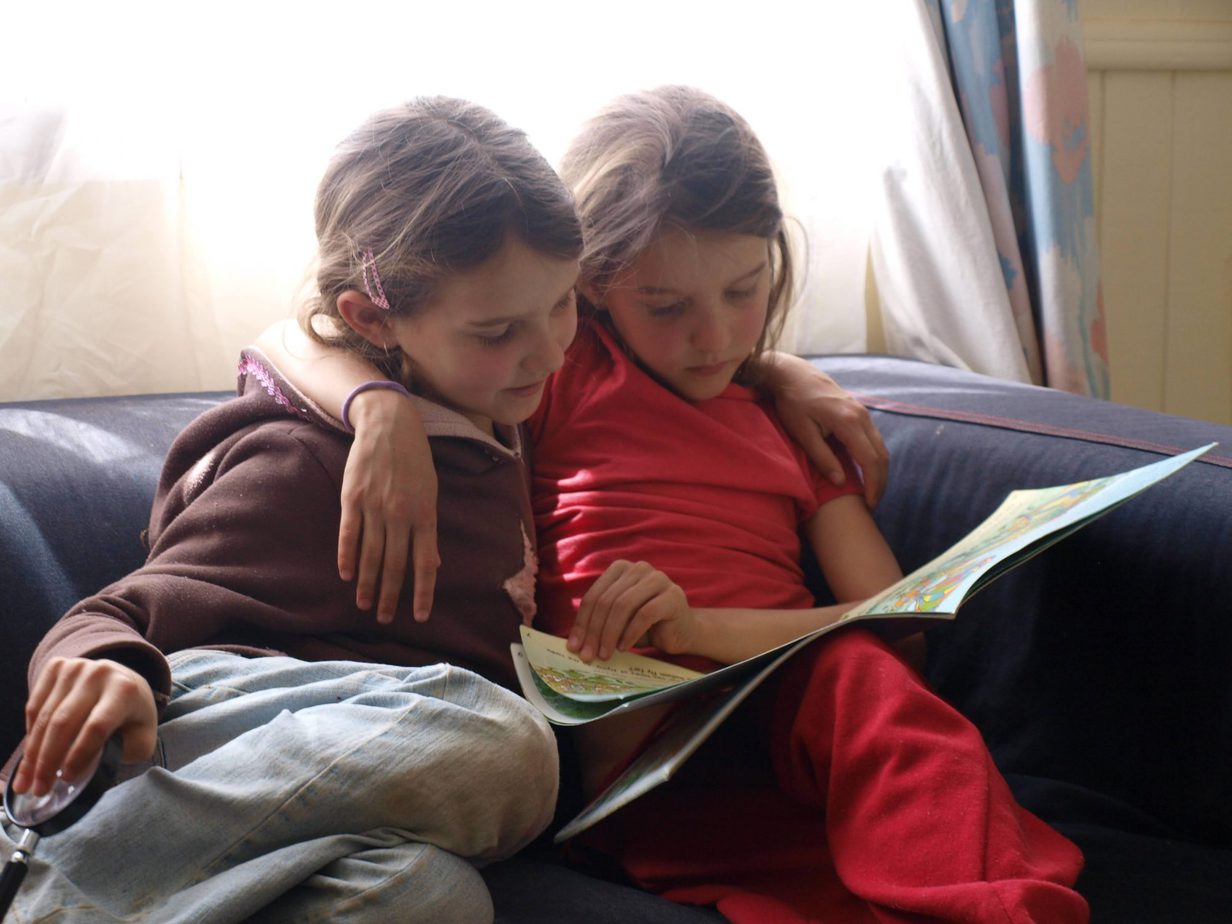
Holli & Asha, aged 7While four of my five children learned to read fairly effortlessly, Rex needed to put a lot more work into it. He has a syndrome, so each skill needs to be taught explicitly and repeatedly – he’s unable to learn the basics and decode the rest.
After trying out the resources we’d used for the other children and we realised they weren’t enough for him, we decided to use a complete reading curriculum. One that told us exactly what to do, and that my husband or I, or our teenage daughters, could pick up and use at any time. (We pay our teens to help teach our younger boys. It’s fantastic).
We’ve used All About Spelling and loved the approach, so when a friend was ready to pass on her set of All About Reading Level 1 I snapped it up.

We’ve been using it for a few months now and it’s brilliant, so I’m going to show you through it so you can see if it will suit you too. Keep scrolling for two All About Reading lessons on video.
All About Reading – my review
First, the nerdy stuff. All about reading uses the Orton-Gillingham approach. I’m not an expert in reading methods, but here’s what I like the most about this approach.
Multisensory – it’s not all book based, there are manipulatives and hands-on materials.
Mastery-based – Instruction doesn’t jump around, it aims for mastery of each skill before moving onto the next one.
After around 12 years of homeschooling my children I’ve learned that these two features are incredibly valuable to us. Resources need to provide something concrete to reinforce abstract learning, and skills need to be taught properly the first time, not just skimmed. These are features I now look for in every resource we use, and the ones that do it well (like All About Reading and Math-U-See) give us great results.

OK, now we’ve got the educationalese part out of the way, let’s have a look through all the different parts of All About Reading Level 1. I’ll then walk you through a typical lesson, and if you make it that far I’ll show you how to get started!
Note that I’m reviewing the black and white version. The new edition of All About Reading is colour, and it’s beautiful. There’s also increased content in the Teacher’s Manual and Activity Books, so it’s now even better than it is here.
All About Reading Teacher’s Manual
If you have NO IDEA how to teach reading, this is your new favourite resource!
The lessons are scripted and tell you EXACTLY what to do and in which order to do it. Each step of each lesson is laid out clearly – you just need to collect the materials and follow the instructions.
I admit, when I first heard about scripted lessons I thought they sounded silly and false. But after using First Language Lessons I became a huge fan – scripting makes resources incredibly easy to deliver and it’s never felt awkward or rote for me.
The lessons also include useful tips – so as you go through the lessons you’re learning about how to teach and getting specific help on issues that may crop up.
Learning Activity Book
This contains all the activities you’ll do during lessons – games, word flippers, matching activities and more.
It also includes a progress chart where your child can mark off each lesson as it’s completed, the fluency practice sheets, and a completion certificate.
There’s enough of hands-on practice and activities in here to keep it fresh and interesting. I’ve always found random supplementary resources on Pinterest (which are hit and miss) so this makes my life MUCH easier.
All About Reading Letter Tiles
Yay for manipulatives! The letter tiles are great fun.

The vowels are coloured differently to the consonants – and the fact that y can be either a vowel or a consonant was an a-ha moment here!
Multiple letters that make a single sound, like ch or qu, and even ough, also have single tiles, which is a fantastic visual representation. It can be quite difficult for beginning readers to remember these rules, and the tiles make it much easier.
Early readers
The All About Reading story books are fantastic. They’re hardcover collections of short stories, so they’re more like a ‘real’ book than a little-kid book – great for older children who baulk at reading ‘baby’ books. The stories are great considering how limited the vocabulary is. The pictures add extra depth and ideas to the story, fleshing out the basic text.
The teacher’s manual tells which story to read with each lesson, and even provides discussion questions that are a great way to extend the story and gently test comprehension.

Phonogram & Word Cards
Not as scary as they sound, they’re just flashcards! Phonogram just means a written symbol for a sound.
One side of the phonogram cards has the phonogram that you show your child, the other shows you the sound it makes plus example words and useful tips.

The word cards are just that, word cards – nothing complicated there!
The dividers organise the flashcards into categories, and each lesson tells you which cards to learn and which cards to review – it’s very straightforward.
These are included in the All About Reading Student Packet.
Reading Games with Ziggy the Zebra (optional)
Want even more games and activities?
To be honest, I would never have bought this new. I’m a bare minimum sort of person, and I NEVER get the optional extras. But they’re actually pretty fun!
I draw the line at pretending to be a zebra hand puppet though – Rex has to make do with boring old me. He’s a little old for that sort of stuff, but 10 years ago my preschoolers and I would have been in hysterics during these games.
These are very obviously educational. If you have a child who enjoys educational games, they’ll love these. If your child views educational games with suspicion skip them.
What does an All About Reading lesson look like?
I thought the best way to show you was to record a lesson or two – watch Forrest and I walk you through two lessons in All About Reading Level 1.
The lessons are all a little different – some teach new concepts, others are review. Here are the common activities you’ll do.

Review – you’ll review the phonogram and word cards from previous lessons.
Teach – new sounds and blends using the letter tiles
Activities – complete a word flipper, activity sheet, or similar
Fluency practice – reading lists of words to improve fluency. These can be LONG, so you may need to split it into a few sessions.
Early reader – your child reads a story to you.
Read aloud time – I love that they include this. As the parent, you’re expected to read aloud. I believe it’s the easiest and most reliable way to get kids to actually WANT to read – loving books and stories provides the meaningful end result needed for motivation.
Mark your progress chart – your child can mark off the lesson they’ve completed and note their progress.
Good Points about All About Reading
Reassuring – You don’t need to know ANYTHING about teaching reading to begin, but you’ll learn a lot about it along the way.
Multisensory and hands-on – the letter tiles and activities help provide specific practice and give the lessons variety. I used to find random free resources on Pinterest (which often didn’t match up perfectly), so this saves me a LOT of time.
Comprehensive and rigorous – nothing is left to for the child to figure out alone, every single area is taught explicitly. Perfect for children who won’t connect the dots on their own.
Lots of review – essential for us! Stuff that is taught once and barely mentioned again falls right out of Rex’s head, and systematic review prevents that.
Great for kids with special needs – really, all the points made above indicate that. Reviews on the site talk about kids with Downs Syndrome, vision problems (plus autism/dyspraxia/processing issues), dyslexia, and English as a second language, plus gifted children. All About Reading seems to work well for the entire spectrum of needs.
FANTASTIC early readers – they’re not babyish, the stories are interesting enough, and the pictures are great.
Levels, not age or grade specific – great for kids whose ability doesn’t match their grade level.
Prep work is mostly up-front – once you’ve done the initial set-up there’s very little to do to prepare each week, so you won’t be tempted to put lessons off because of the preparation required (we all think that, right?).
Guarantee – this is the best guarantee I’ve ever seen. You can try it for AN ENTIRE YEAR and if you’re not impressed you can send it back and get a full refund. That shows incredible confidence in the product.

Not so good points about All About Reading
Some kids will get bored – My girls just didn’t need this depth of instruction.
Parent-intensive – Yes, you need to do EVERYTHING with them. This is typical of the age and stage of learning to read, and I find it’s necessary because you need to know exactly what they are and aren’t understanding. But if you want something you can set your child up with and forget about, this isn’t for you.
Price – Like all comprehensive resources, it’s pricey. But the brilliant guarantee means there’s no risk in trying it, it can be used for multiple children, and it has great resale value, so you’ll get a big chunk back if you look after it.
All About Reading for Australians
OK Aussies, this program is from the USA, and we all know how difficult they like to be about spelling, right?
Overall, the differences really are minimal. There’s a CD with pronounciation that we don’t use, and later on we’ll need to point out the differences in spelling. It’s easy to work around, and I find it’s an issue that came up with all of my girls anyway, as they learned reading and spelling from reading books as much as from actual programs. Explain the differences and move on.
As a side note, we use accents to teach reading and spelling. For example, using ‘er’ at the end of words makes no sense to an Australian child who pronounces it ‘uh’. Say the same word with a Canadian accent and the knowledge that Aussies are lazy talkers and it begins to make sense. It’s quite fun! Our lessons quite often contain an Australian bushie, a Cockney, and an American all saying the same word in a completely different way.
How to get started with All About Reading
All About Reading consists of four levels (Levels 1-4), plus a pre-reading program.
If you’d like to have a more in-depth look, each level has samples for EVERYTHING. I always feel reassured when I see this, it means the company has nothing to hide!

Each level has a placement test – these review the skills in each level. They include word lists and full stories, plus questions for you to answer. Choose the level you think your child may be at, and run through the test.
When you’ve found the correct level it’s very easy to purchase – simply follow the instructions on the site. If you’re starting from scratch you’ll need a Reading Interactive Kit (used for all four levels), and for each level you need the Teacher’s Manual, Student Packet, and readers.
Once you receive it, simply follow the instructions at the beginning of the Teacher’s Manual and you’re ready to go!
So what do you think? Will you be trying All About Reading? Do you already use it? Do you have any questions that I haven’t answered? Let me know in the comments!




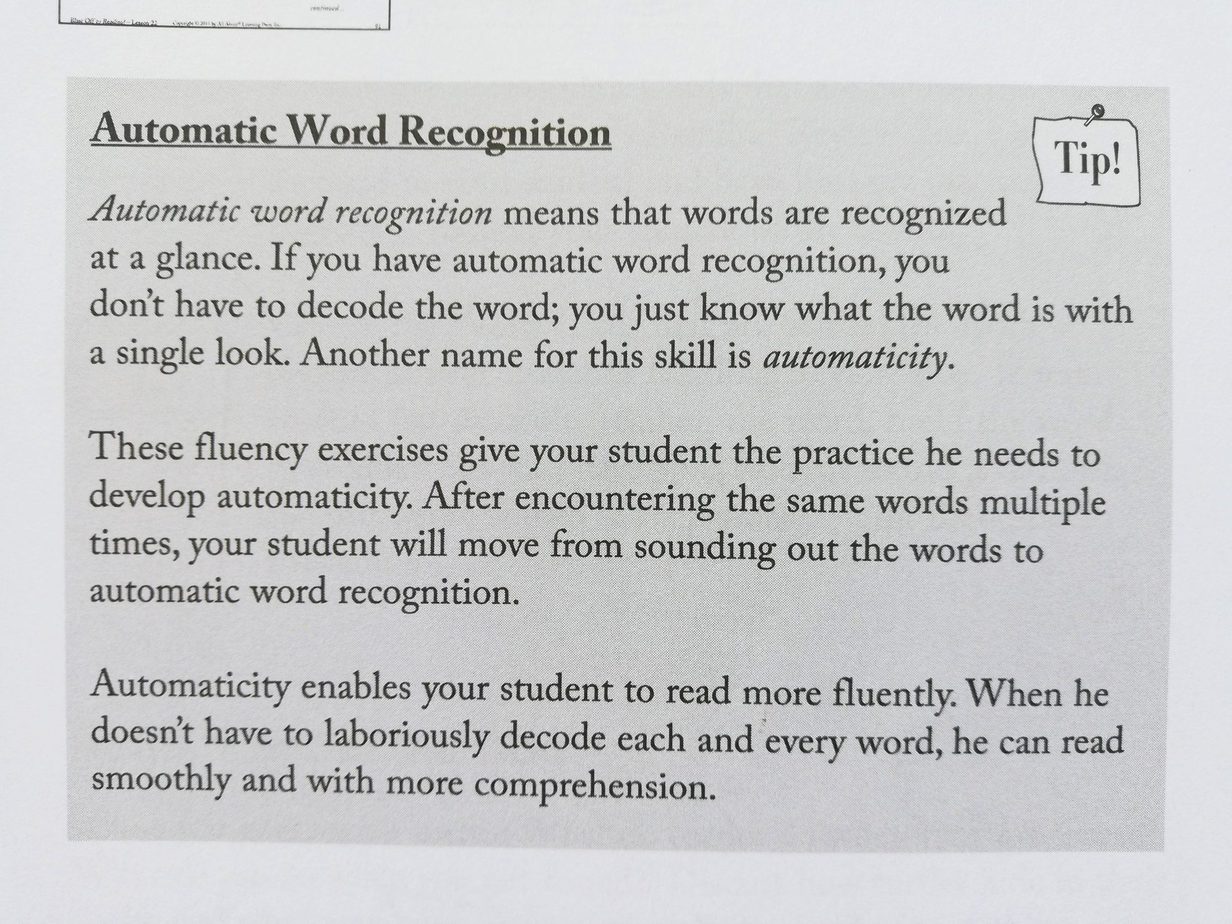


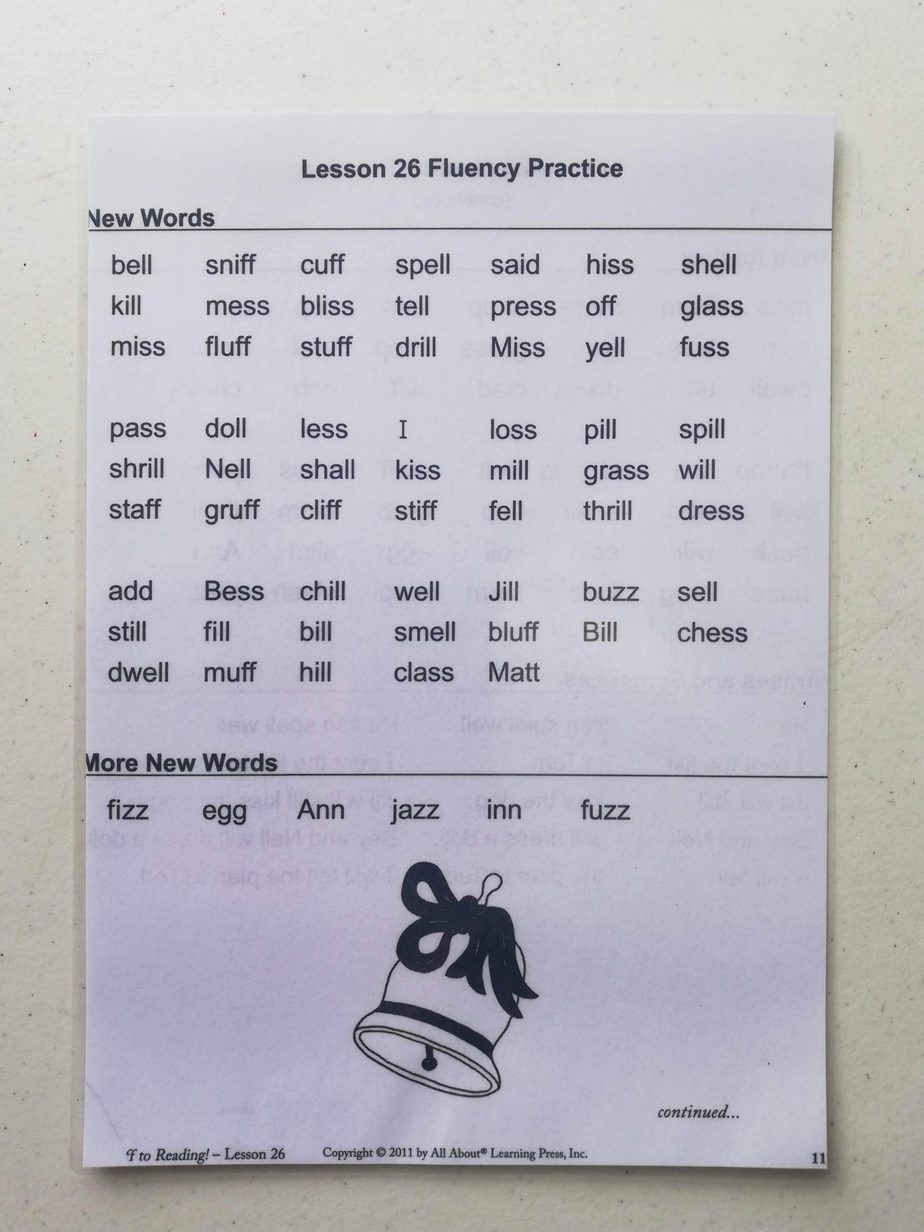

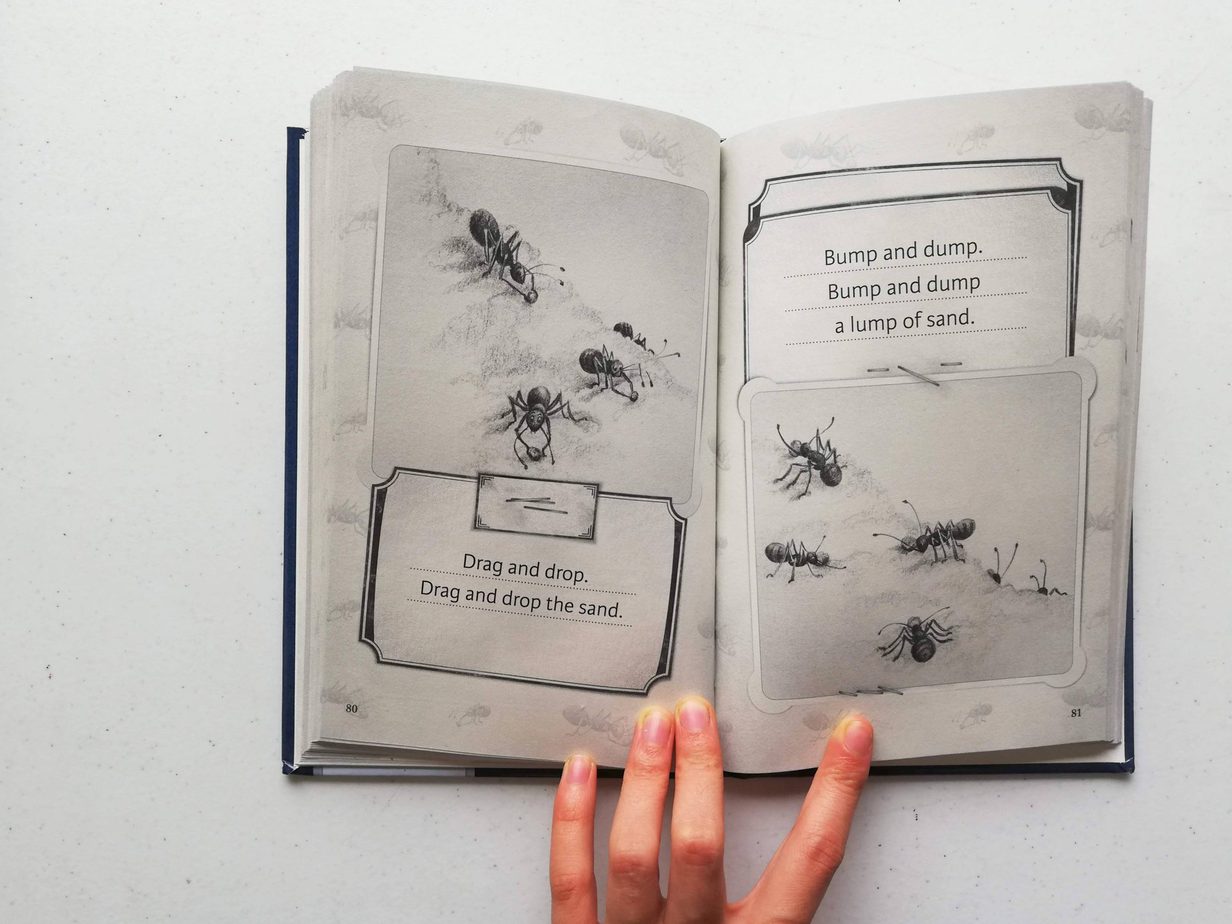

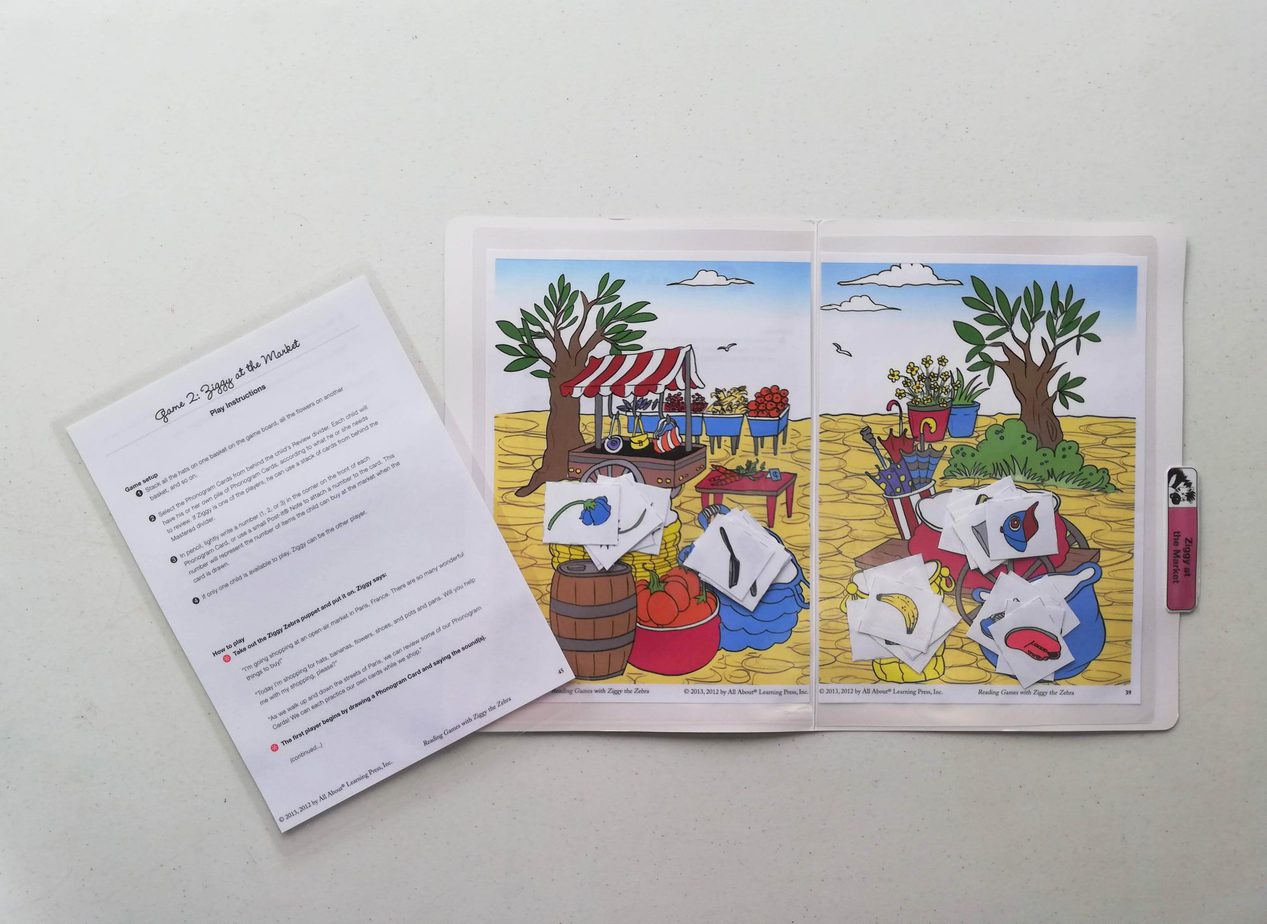
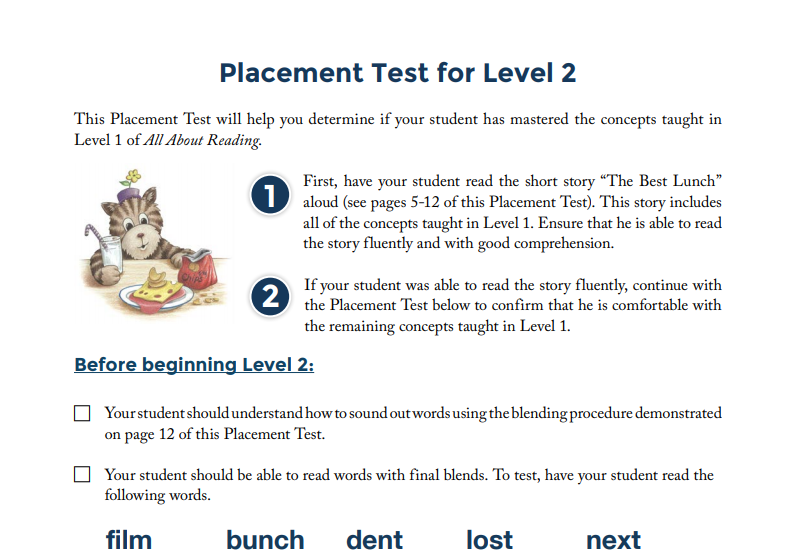

Trackbacks/Pingbacks